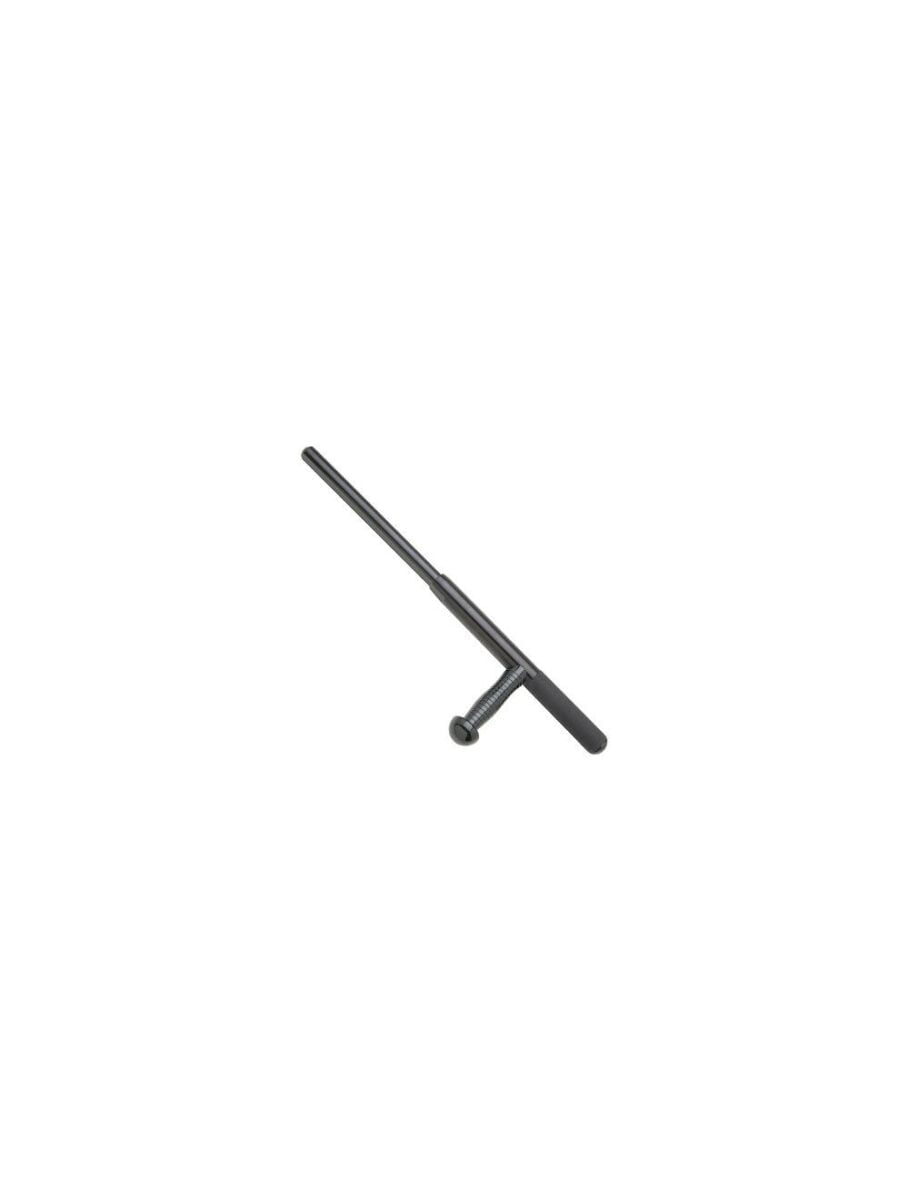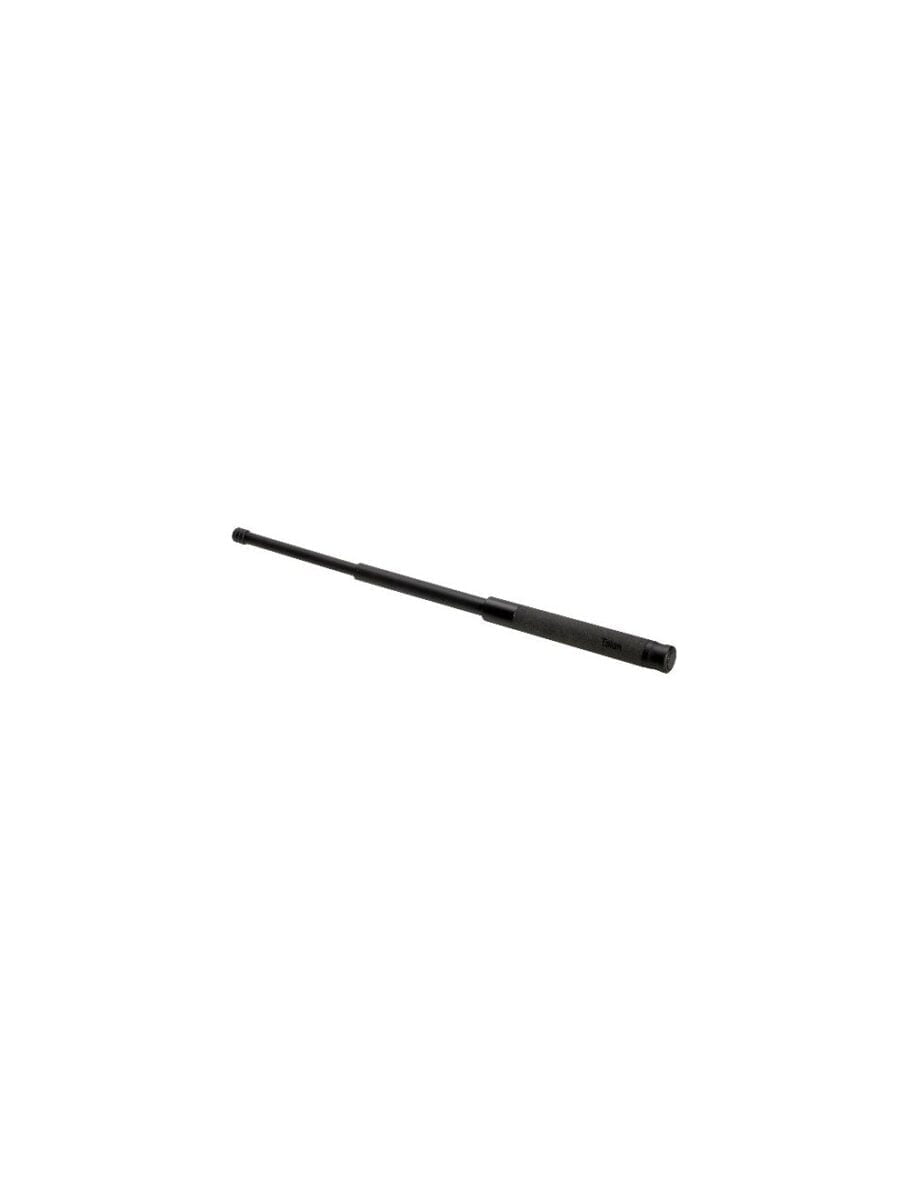From the days of the founding of law enforcement forces to all the way to modern times. There have been some tools that have continued to be the law enforcement partner for more than 200 years. These essential tools are nightstick and baton. These two tools have played pivotal roles as law enforcement partners in maintaining order, ensuring safety, and even inspiring linguistic evolution.
Similarly, these two terms often spark confusion and curiosity due to being used interchangeably by the police forces. In this comprehensive comparison of nightsticks vs. batons, we will delve deep into the world of nightsticks and batons, uncovering their historical origins, design differences, functional uses, cultural variations, legal implications, and much more. So that you never have to misjudge one in the future.
Nightstick
One of the most confusing aspects is the name nightstick. Most of you might be familiar with the term “baton” but the same can’t be said about nightstick. So, let us shed some light on the origin of the name Nightstick before we move on to the side-by-side comparisons.
In the early age of law enforcement, police officers used to carry different length batons at different times of the day. Where a more robust and longer baton was used during the night, measuring up to 660 mm (26 inches) in length with durable hickory wood construction. As it was deemed necessary for extra protection under the shroud of darkness. Leading to its name of “Nightstick”.
Historical Background and Origins
Nightstick

The nightstick’s roots trace back to the 1837s, a time when night patrols demanded extra measures of security. At that time, the term nightstick was used to describe a straight wooden stick that was 660 mm (26 inches) long. Typically, rounded on both ends, with some featuring engraved handles for better grip and a hole at ⅓ of the length toward the handle side to attach a lanyard for nightstick weapon retention.
They were designed to provide law enforcement officers with a reliable tool to maintain peace during the dark hours. Thanks to their intimidation factor and quick crowd control abilities, they were the favorite tool among law enforcement.
However, with time the use of night stick batons by law enforcement became unrestrained and would even result in lethal injuries. At that time police force was hired based on references with little to no training.
However, it could only be highlighted during the 1960s when the civil rights movement of the 1960s was taking place. The televised images captured the unrestrained use of nightstick against the minorities, propelling its bad rap to the peak.
After which laws were enacted in 1970 to prevent the use of lethal force even by law enforcement forces. Resulting in a sharp decline in the use of night sticks which was succeeded by side handle batons and expandable batons.
Nowadays, in order to effectively use a nightstick, law enforcement officers have to go through proper training to ensure that they can effectively utilize this weapon without inflicting long-lasting or lethal harm to the other party.
Baton:

The history of Baton is quite similar to nightstick and some more. The reason being that all nightsticks are batons but not all batons are nightsticks.
Continuing the history of nightstick, the era of modern batons came after the 1970s after the laws were enacted to stop the lethal use of weapons.
As the law enforcement forces started to look for more non-lethal options. The first highly effective option that came to be, was the invention of the side handle baton. It emphasizes more on self-defense and hitting the pressure point, to stop the attacker in his tracks instead of actively attacking. Furthermore, the side handle batons also made it possible to lock the arm of the attacker to allow faster submission.
As the trend of side handle batons took over, one baton stood apart among the others and became the new partner of law enforcement officers. It was the PR-24, a 24 inch long side handle baton with durable construction and trumble stop design that allowed greater retention. However, even it couldn’t remove the bad rap developed by nightstick.
The perfect solution to remove the bad rap of law enforcement came in the form of expandable batons. Which were invented by the ASP (Armament Systems and Procedures .inc). These expandable batons could be expanded and retracted whenever needed. Furthermore, when in retracted form, they could be easily concealed and carried with other duty gear without letting anyone know. This drastically removed the bad rap and made it possible for the common people to seek the help of police officers without getting intimidated. To this day, expandable batons are the number one choice among the police force and law enforcement forces.
Physical and Design Differences
Size and Shape:
Nightstick Dimensions:
Nightsticks are typically characterized by their elongated, slender, and straight design. A typical nightstick dimensions are 24-36 inches in length and less than 2 inches in width. They are designed to be longer compared to batons, to provide extra reach to keep potential threats at a distance.
Baton Dimensions:
In contrast, batons come in various sizes and shapes, offering versatility for different situations. The most common sizes range from 14-32 inches in length and feature a wide range of shapes like straight batons, side hand batons, expandable batons, side handle expandable batons, and much more.
Material and Construction:
Common materials for Nightsticks:
Most common materials used in the construction of nightsticks are: Durable Wood, iron, and high-grade rubber. They are typically made from a single block of material to ensure greater sturdiness.
Common material for batons:
The most common materials used in the construction of batons are: High-grade rubber, Durable wood, Steel, Aluminum and Synthetic materials. Most of the batons are constructed from a combination of different materials to enhance the benefit of each. For example, handles are made of high grade rubber or synthetic material to provide robust grip while the shaft is made from steel and aluminum etc.
Functional Differences and Uses
Law Enforcement
Law enforcement has a long history of using nightsticks and batons such that they are commonly referred to as “police nightsticks” “police baton sticks” and even “tactical Batons”. With time, the use of nightsticks among the police has diminished a lot. but whenever officers need to face large crowds or riots, a nightstick is always preferred as it is more durable and resistant to wear and tear.
On the other hand, Tactical batons like expandable batons are the preferred choice at all other times due to easier portability, greater maneuverability, and concealment ability.
Self-defense
When it comes to self-defense, most civilians prefer Batons. Specifically, the expandable batons as they make it easier to carry them and are more compliant with legal regulations due to their concealability.
But regardless of whether you want to use a nightstick or baton for self-defense. It is important to remember that although they are non-lethal weapons, they are also next to lethal weapons.
This means that without proper training they can result in inflicting lethal injury. Especially if used on vulnerable areas like the head, spine, joints, chest, and groin.
It is highly recommended that you use these self-defense batons after getting their respective baton techniques training. Similarly, attack only the arms and legs of the attacker to get enough time to escape without landing into more trouble.
Legal Implications
Nightstick Regulations
There are many laws regulating the use of night sticks, let us go over them one by one. First of all, are night sticks legal? The answer is yes, for the most part. Only the state of California declares it illegal to own or carry a baton while states like New York, Massachusetts, and Washington only prohibit the open carrying of batons while all the other states in the USA make it legal to own or carry a nightstick.
With the legality out of the way, there are other regulations that regulate the use of night sticks. They are:
Use of force: the use of a night stick is legal as long as the force it is used with is justifiable based on the threat. Excessive force can result in legal action even if it was meant for self-defense.
Open carry law: Some states allow the open carry of certain weapons including nightstick which allows you to carry a nightstick in plain view. While other states prohibit carrying nightsticks in plain view.
Intended Use: The legal use of nightsticks is only limited to self-defense and law enforcement needs. Using a nightstick with the intent to harm others without justification may lead to legal consequences.
These were common nightsticks regulations but they may vary from state to state. So, be sure to your state guidelines before purchasing or using one.
Baton Regulations:
Batons are regulated by similar laws as the nightstick. Adding on to that, let’s take a look at additional baton regulations.
Local Ordinance: the rule of state isn’t meant to supersede the local ordinance. There are many states which allow the use of batons for self-defense but some cities banned use of expandable batons. Such that, you can’t only refer to the state guide but also need to consult local laws before knowing whether the use of a baton is permissible or not.
Read about the legality of expandable batons
Possession and use regulations: Similarly, the guidelines for the possession and use of batons may vary based on whether the user is a law enforcement officer or a civilian. For example, officers aren’t allowed to strike vulnerable areas and need to justify their use of force. Similarly, they can’t be allowed to strike a fleeing or a subdued suspect.
On the other hand, civilians are even more restricted over the possession and use of batons. Such that they can only use the baton for self defense while ensuring that they don’t use excessive force or use it with attacking intent and shouldn’t hit the vulnerable areas.
Training and certification: Some states make it compulsory for law enforcement and private security personnel to have certain training or certification before they are allowed to carry or use batons on duty.
Advantages and Disadvantages
Nightstick
Pros
- Nightsticks are typically longer, providing greater reach compared to most batons.
- Nightsticks are constructed from solid single-piece materials like wood or dense plastic, making them durable and resistant to significant force.
- Nightstick are more intimidating and are capable of stopping assailants in mid action.
- Easier to control due to simple design
Cons
- Nightsticks are primarily offensive weapons and do not offer as much defensive capability
- Nightstick are extremely simple in design and do not offer much versatility.
- Wooden nightsticks are durable but they can also splinter upon breaking leading to more lethal injuries.
Baton:
Pros
- Batons are more versatile and offer greater convenience in terms of added functionality.
- They offer multifunctionality. Capable of both self defense and crowd control.
- Modern batons offer better grip and greater weapon retention.
- They are more compliant with the modern non-lethal weapon guidelines.
Cons:
- More expensive than nightsticks.
- Require more training to master.
- Easier to break due to delicate expansion mechanisms.
Conclusion
There you have it, Nightstick vs Baton. Now you know that nightstick is a type of baton which typically features a rigid shape, commonly in a lean stick structure. Most officers use the word nightstick to refer to older yet simple stick batons and the word baton for the modern expandable baton respectively.
Both offer unique benefits like nightsticks are more robust and easier to use, making them great for crowd control. While the batons (expandable batons) are more convenient to carry and allow quick deployment, making them great for routinely patrols.
In terms of which is better, baton vs nightstick, is highly dependent on the person’s needs and desires.
FAQs:
What is the difference between ASP baton and nightstick?
There are many differences between the ASP baton and Nightstick. Nightstick is an older baton while ASP baton is a modern expandable baton. A nightstick is more durable while an ASP baton is more convenient to carry. ASP baton is easier to store while same is not the case with a nightstick What is the difference between a baton and a billy club?
Billy clubs are older versions of batons which are made from a single piece of wood or steel. They typically include a handle on one end and a slightly more enlarged rounded end for striking.
Why are police batons called nightsticks?
Police batons are commonly referred to as nightsticks based on the traditional name of baton that can be traced back to the early ages of law enforcement. At that time, police used to be equipped with longer sticks at nighttime to combat assailants in the darkness of the night. Hence, leading to the name nightstick.
